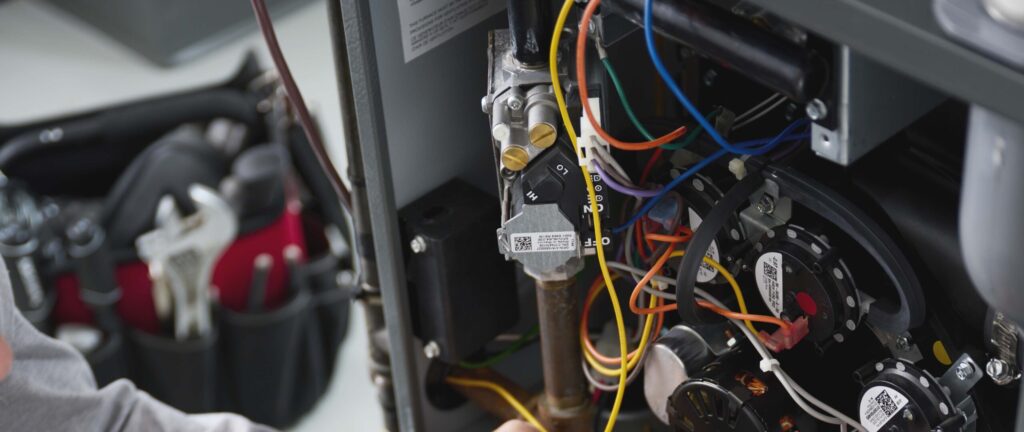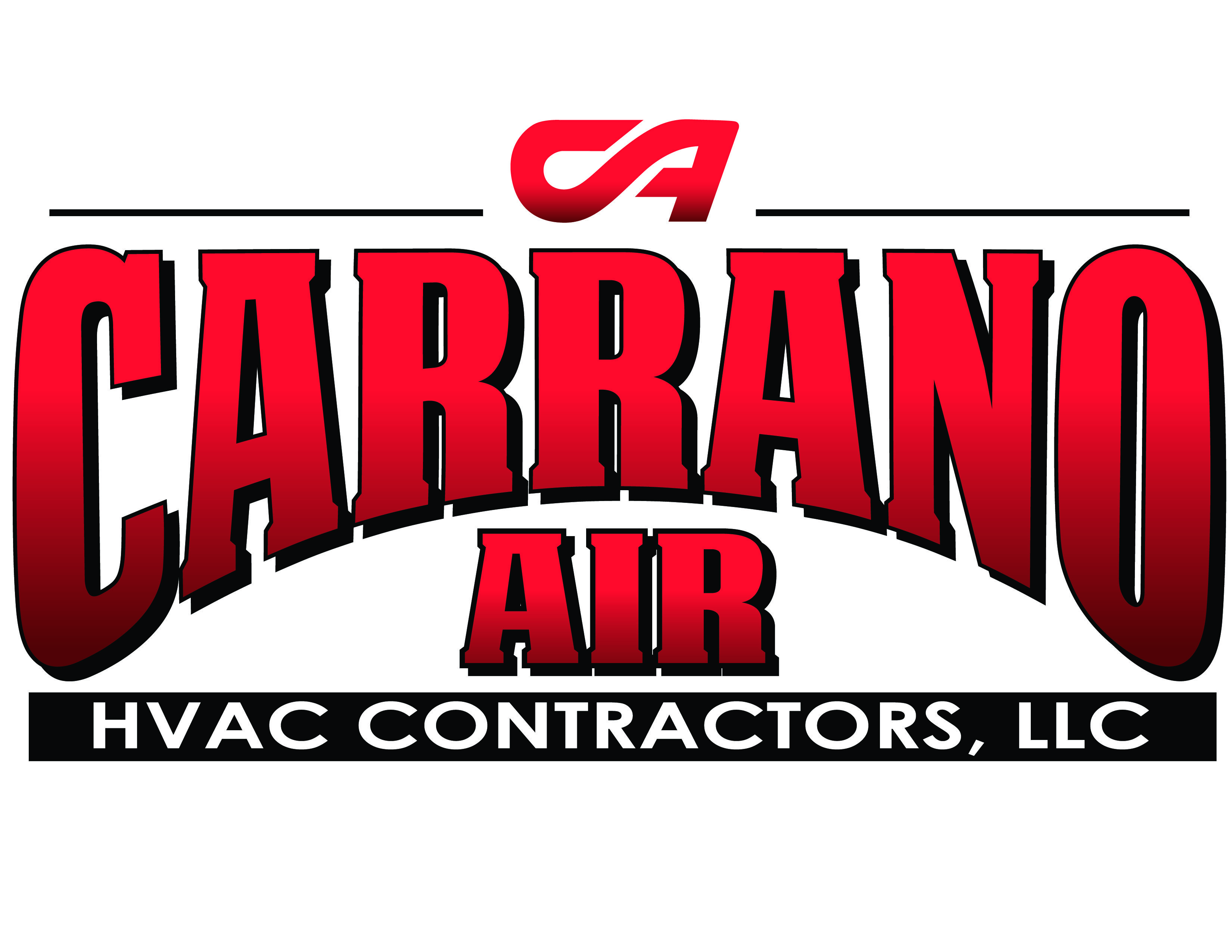
Once you notice that your Furnace Doesn’t Turn On, you may be worried that you need to replace it. Many homeowners shy away from troubleshooting their air conditioner or furnace because inspecting or repairing blower motors, heat exchangers, electrical circuits, and gas valves seems difficult. However, if you have the right information, you may be able to identify the cause of the problem before calling a professional HVAC technician for help.
Find out in this guide what you should do if your heating is not working properly. These simple step-by-step instructions can help you quickly identify and fix problems so you can keep your home comfortable and safe. Remember, whenever you need service, you can call us here at AC & Heating Experts Princeton.
1. Thermostat Not Powering Up
Your thermostat requires a power source to relay electrical information to your HVAC equipment. Some thermostats are hardwired, meaning they are connected directly to your home’s electrical system via wiring. Others rely on batteries to get the power they need to run your system. Even hardwired thermostats can have battery backups so they don’t lose all functionality in the event of a power outage. Check these points to ensure your thermostat has power.
- Advertisement: Take a close look at your thermostat. Are there any lights on the device or is there text on the screen? If the screen is completely blank, it may indicate a lack of power.
- Battery Condition: Locate the battery compartment in the thermostat and replace the batteries. If the batteries appear corroded or you notice that they are old, your system may require battery power to function properly. Replace the batteries to see if power is restored. If your device is hardwired, check the circuit breaker panel for tripped circuit breakers and reset any broken circuit breakers.
2. Thermostat Set Incorrectly
Incorrect thermostat settings can cause problems with your furnace. While it may seem like there’s a problem with your heater simply not turning on, a simple date, time, setting or switch issue can cause your system to stop responding. Check these settings on your thermostat to ensure adequate heating.
- Date and Time: Make sure the date and time are reflected correctly in your thermostat readings. Check whether the AM and PM settings are appropriate for the current time.
- Heating Mode: Check if your thermostat is in “HEAT” mode. Sometimes appliances are accidentally switched to “COOL” or “HOLD”, which can interrupt normal heating operation. Also check if the set temperature is a few degrees above the current room temperature to see if a heating cycle is triggered.
- “Hold” setting: Whether you are at home and need more heat or on the way to the store and don’t want to heat an empty house, use the “HOLD” setting accordingly. Use the “HOLD” setting if you need to make occasional adjustments to the thermostat’s normally programmed temperatures, and be sure to turn it off when you are finished.
3. Furnace Not Powering On
furnaces require fuel to operate. Gas furnaces require both a natural gas source and an electrical connection to operate, while electric furnaces only require electricity. If your system isn’t receiving the energy it needs, it won’t be able to turn on and heat your home. Here are some things to check if your furnace won’t turn on.
Circuit Breaker Boxes:
Locate the circuit breaker box in your home and open the electrical panel. Locate the circuit breaker that controls the furnace and see if the paddle has tripped. If it tripped, it may have slipped slightly. If so, turn it one way and the other to reset it.
Power Switch:
furnaces also have a physical on/off switch near each unit. Check these switches to see if they were accidentally flipped.
Internal Fuses:
furnaces contain a control panel with internal fuses. These fuses monitor the levels of current flowing through your furnace and are designed to fail if the system’s electrical current is interrupted. However, blown fuses will render your furnace inoperable, and they can blow for simple reasons such as a power surge after a storm or if you forgot to turn off the power before turning off a thermostat. Here are some steps to check furnace fuses.
- Turn off your furnace using the circuit breaker.
- Open the furnace access door, which should show you the circuit board. Find the fuse. Fuses are often colorful, small and made of plastic.
- Remove the fuse from the panel and check it with a flashlight. Blown fuses must be blown or internally defective.
- Take the fuse to the hardware store to find an identical replacement. Replace the fuse by pushing the new fuse firmly in.
- Close the cover and restore power to the furnace. Set the thermostat a few degrees higher than room temperature to see if the system turns on.
- If the furnace is working properly, the fuse is probably the cause of the problem. If the fuse blows again quickly, you may have more complex electrical problems with your furnace. If the fuse continues to blow and the furnace still does not work, there may be a more serious electrical problem in your furnace. Call customer service to have the electrical connections checked and repaired.
Gas Valves:
Natural gas furnaces use gas to power the combustion sequence in your furnace that produces heat. If your system does not turn on, the valve may be closed. There should be a gas line with a valve near your furnace. The valve must be opened or rotated to align with the gas line if it is open. When the valve is closed, it can be perpendicular to the pipe. Open the valve so that it lines up with the pipe when closed.
If the valve is open but your system won’t start, you may have a natural gas break in your area. Contact your energy supplier to find out if this is the case. If there are no gas problems, there may be problems with your system that are causing the safety switches to trip, such as Problems with your pressure switch, pull induction motor or circuit board. Contact a professional to inspect your system for worn or damaged components and to make any necessary repairs.
4. Furnace Access Panels Open
To protect homeowners, most furnaces have a built-in safety device that will prevent the system from operating if the access panels are not properly installed. Check your furnace for panels that are missing screws, are not installed properly, or are open for any reason. Replace them and attach the plates to see if that solves the problem.
5. If Your Furnace Does Not Ignite
If your furnace turns on but the air coming into your home isn’t hot, it could mean your system isn’t igniting and producing the flames needed to produce heat. Here are a few things to check if you think your furnace isn’t heating properly.
Pilot light not burning
Most older furnaces use pilot ignitions, which are a constant burning flame that ignites the furnace when the system starts. However, if the pilot light goes off, it could mean that your furnace is unable to heat your home. Many homeowners think they smell natural gas when their pilot light goes out. However, furnaces typically have a safety device that stops the flow of natural gas if the pilot light goes out. Follow these steps to get your night light glowing again.
- Unscrew the access panel that covers your furnace and pilot light assembly. Find the reset switch and turn it off.
- Turn the switch to the “PILOT” setting to give natural gas the chance to flow. Hold in the reset switch with one hand, while you use your other hand to light the pilot with a match or lighter. Hold in the switch until the light burns steadily.
- Release the switch and continue monitoring the night light. If the flame flickers or goes out, you must call a repair facility.
Dusty electric ignition
Whenever appliances burn fuel to generate heat or electricity, soot buildup can occur in the system. On newer furnaces with electronic ignition, dirt and dust build up in the system, preventing the ignition sequence from starting the system. When this happens, the furnace may make a clicking noise, which indicates that the furnace is trying to relight but is unable to complete the ignition sequence. Cleaning the contact may help, but use extreme caution. Ignition components are delicate and can be easily damaged. If they are damaged, the contact must be replaced.
- Turn off the circuit breaker that controls your furnace or use the “ON/OFF” switches on the side of your furnace to turn off the power.
- Shut off natural gas lines. To close this valve, turn it perpendicular to the supply line.
- Open the access panel in front of your furnace’s burner chamber.
- Find the detonators. They look like ceramic components with electrical connections at the end. Use canned air to dust off the igniters. Try to dust these components at least 30cm away.
- Replace the access panel and restore power to your furnace. Open the gas tap. If your furnace turns on and works normally, you may have solved the problem. If not, the contact may need to be replaced.
6. Furnace Short-Cycling
If your furnace turns on and then shuts off quickly, you may have a “short cycle.” This sometimes happens when there are problems with air circulation or a buildup of dust and dirt in the furnace housing. Here are some reasons why your heater may only run for a short time.
Air filter clogs
Dirty air filters can prevent cool air from getting into the furnace being heated, which can lead to heat buildup in the heater itself. These high temperatures can cause your furnace to shut down to protect the system’s internal workings. Check furnace filters regularly and replace them if they appear dirty.
Grimy flame sensor
Furnace flame sensors are designed to detect the presence of a flame as gas flows through your system. If these sensors are dirty with soot, they may not detect the flame and shut off your furnace. Here are some steps to clean the flame sensor if it is dirty.
- Turn off the furnace. Close the gas tap.
- Unscrew and remove the access panel.
- Locate the flame sensor and remove it. This component can be removed using a ¼” Allen key. Slide the device out. In some cases, you may need to remove a cable to better access this device.
- Scrub the flame sensor rod with very, very fine sandpaper to remove soot and carbon deposits.
- Wipe the sensor with a clean cloth.
- Reconnect the cable and reconnect the flame sensor.
- Replace the access panel and restore gas and power to your furnace.
When to Call for Professional Furnace Repair in Princeton, NJ
Remember: You are never alone when it comes to your HVAC system. Our team is always available for emergency repairs and assistance and we can respond at any time of the day or night. At AC & Heating Experts Princeton, we are committed to ensuring the safety and comfort of our customers through efficient and proactive repairs.
